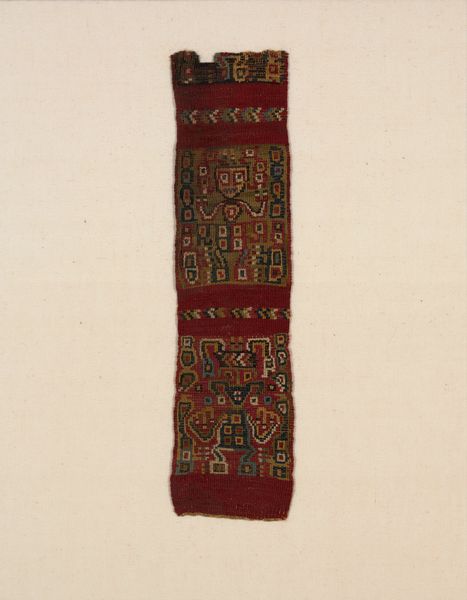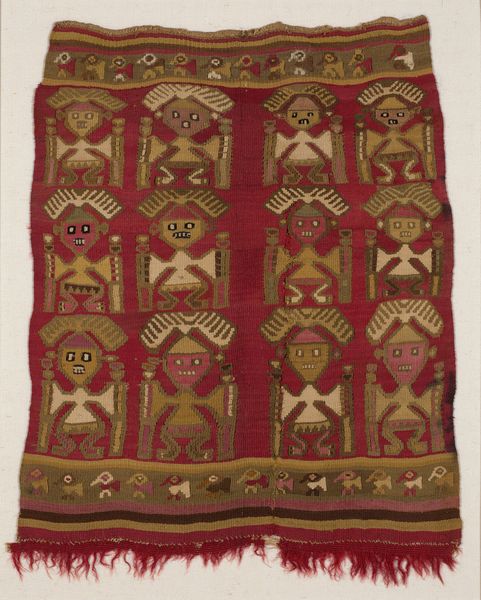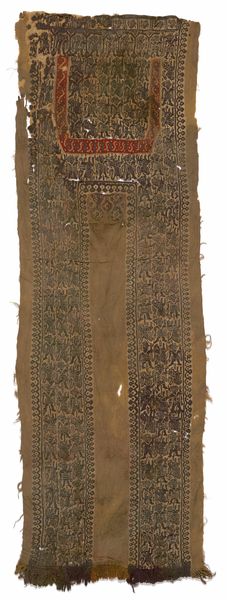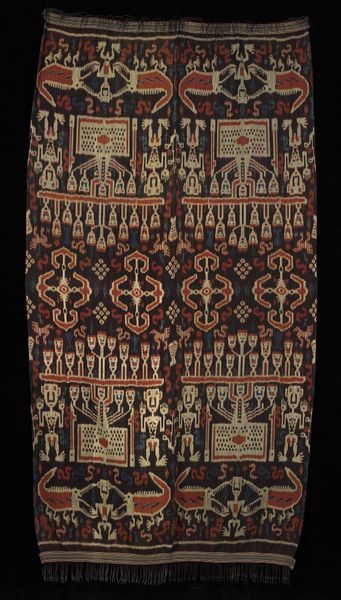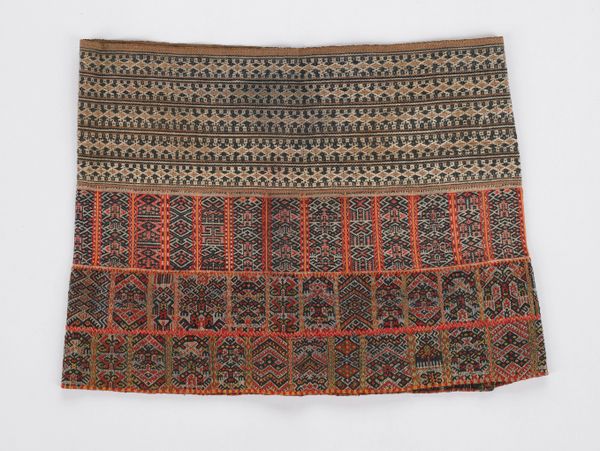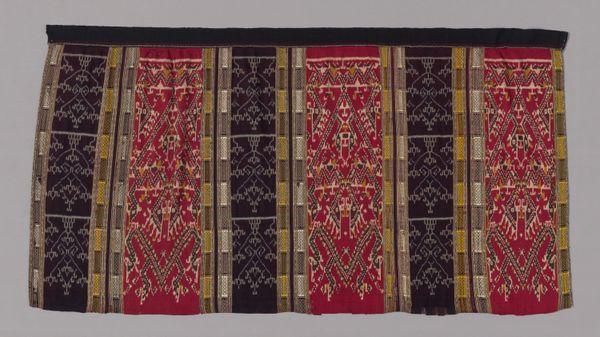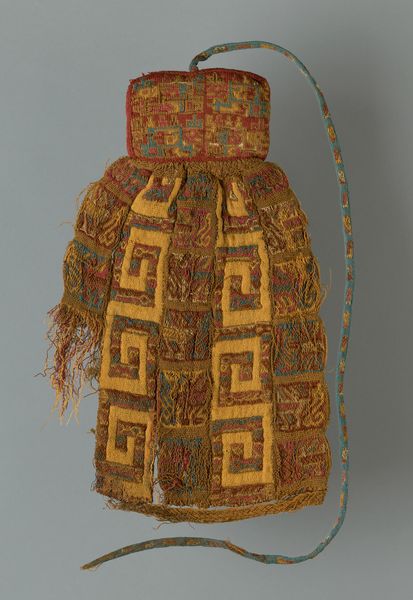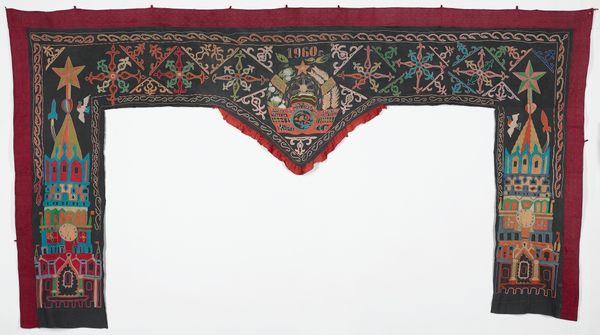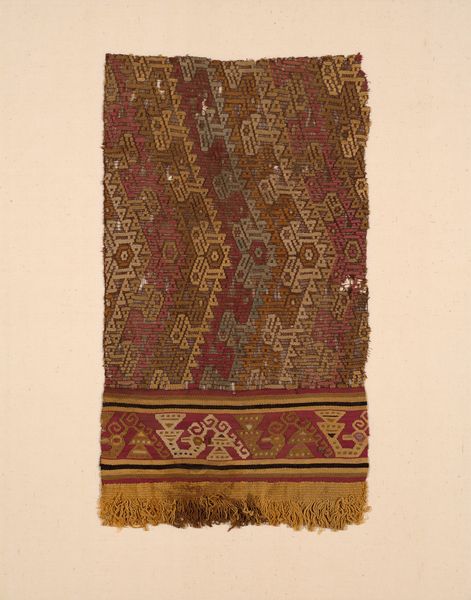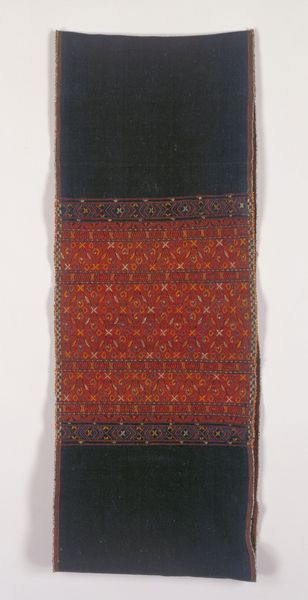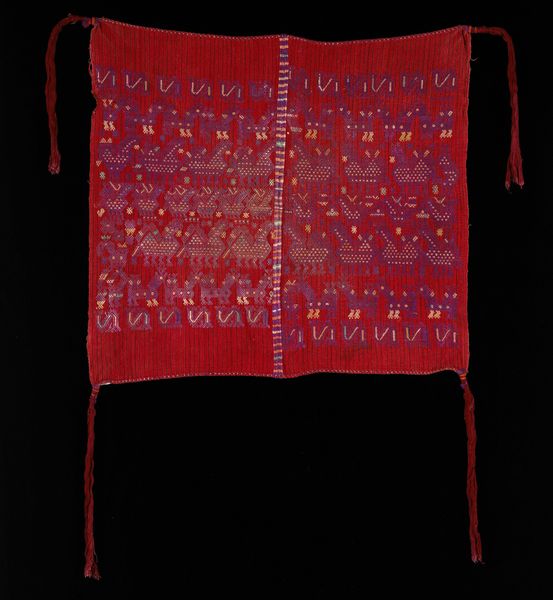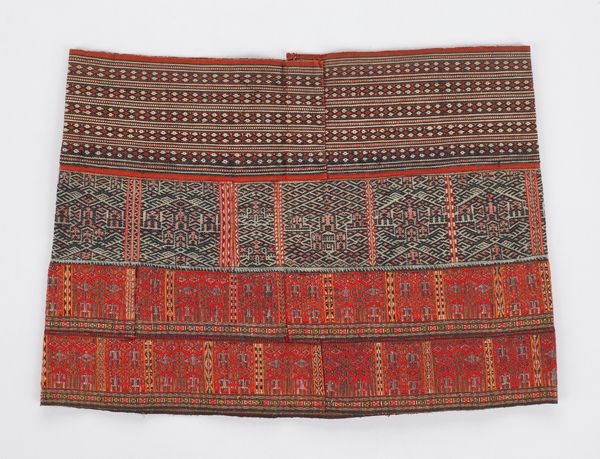
fibre-art, weaving, textile
#
pattern heavy
#
natural stone pattern
#
fibre-art
#
naturalistic pattern
#
weaving
#
textile
#
fashion and textile design
#
hand-embroidered
#
geometric
#
repetition of pattern
#
regular pattern
#
pattern repetition
#
textile design
#
layered pattern
#
indigenous-americas
Dimensions: a: 32.7 × 9.2 cm (12 7/8 × 3 5/8 in.) b: 27.3 × 10.5 cm (10 3/4 × 4 1/8 in.)
Copyright: Public Domain
These “Border Fragments” were created by the Nazca people of ancient Peru, and now reside at the Art Institute of Chicago. The fragments present a glimpse into the cosmology of the Nazca people. The Nazca civilization flourished in the arid coastal region of Peru between 100 BCE and 800 CE. In this challenging environment, water was life, and the crab motifs woven here may have symbolized a connection to the vital ocean. Textiles like these were not merely decorative; they were integral to Nazca society and expressed complex social and religious ideas. The production of such elaborate textiles was likely a specialized skill, indicating a degree of social stratification. Imagine the hands that wove these threads, the stories they carried, and the now-vanished world they represented. These fragments are a tangible link to a culture that thrived centuries ago, holding within its delicate threads the echoes of a resilient people.
Comments
No comments
Be the first to comment and join the conversation on the ultimate creative platform.
